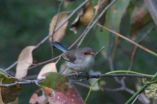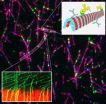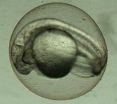(Press-News.org) University of Melbourne Engineers have developed a novel method of collecting and storing carbon dioxide that will reduce the cost of separating and storing carbon dioxide.
The quest to capture carbon dioxide is crucial to a cleaner future and once captured, carbon dioxide can be compressed and safely stored.
It is also a useful source for chemical manufacture. However, current processes are inefficient and require several stages of refining and extraction before a pure form of carbon dioxide is produced.
One method of capturing carbon dioxide is through molecular sieve that is an ultra-fine filter system that captures a variety of molecules that need further filtering.
Professor Paul Webley and his team including PhD student Jin Shang and research Fellow Gang Li from the Melbourne School of Engineering, have developed a new sieve that allows carbon dioxide molecules to be trapped and stored.
"The findings published in the Journal of the American Chemical Society suggest that this new material has important applications to natural gas purification. Many natural gas fields contain excess carbon dioxide that must be removed before the gas can be liquefied and shipped, Professor Webley said.
"Because the process allows only carbon dioxide molecules to be captured, it will reduce the cost and energy required for separating carbon dioxide. The technology works on the principle of the material acting like a trap-door that only allows certain molecules to enter, he said.
Once entered, the trapdoor closes and the carbon dioxide molecules remain," said Professor Webley.
"We took a collaborative approach to this research with input from CSIRO, the Department of Materials Engineering and Mechanical Engineering at Monash University and the Australian Synchrotron.
We have a new material that is able to separate carbon, dioxide from any given stream such as power stations and from natural gas sources. While we can't change industry in a hurry, we have provided a viable bridging solution."
### END
Capturing carbon with clever trapdoors
2012-11-08
ELSE PRESS RELEASES FROM THIS DATE:
Historic coral collapse on Great Barrier Reef
2012-11-08
Australian marine scientists have unearthed evidence of an historic coral collapse in Queensland's Palm Islands following development on the nearby mainland.
Cores taken through the coral reef at Pelorus Island confirm a healthy community of branching Acropora corals flourished for centuries before European settlement of the area, despite frequent floods and cyclone events. Then, between 1920 and 1955, the branching Acropora failed to recover.
Scientists from the ARC Centre of Excellence for Coral Reef Studies at the University of Queensland say the rapid collapse of ...
The right pace of neural development protects against autism and intellectual disability
2012-11-08
Neurodevelopmental disorders such as intellectual disability and autism spectrum disorders are marked by mutations that impair signaling between neurons. These mutations cause key brain circuits involved in learning and memory to develop too quickly, leading to long-lasting behavioral and cognitive deficits, according to a study published by Cell Press in the November 9th issue of the journal Cell. The findings could pave the way to new treatment strategies for severe forms of neurodevelopmental disorders.
"We have provided perhaps the first evidence that acceleration ...
Fairy-wren babies need password for food
2012-11-08
AUDIO:
This is a fairy-wren incubation call.
Click here for more information.
It's always a good idea to listen to your mother, but that goes double for baby fairy-wrens even before they are hatched.
If those fairy-wren babies want to be fed, they need to have a password—a single unique note—taught to them by their mothers from outside the egg. The nestlings incorporate that password right into their begging calls, according to researchers who report their discovery online ...
Scientists uncover secrets of how intellect and behavior emerge during childhood
2012-11-08
JUPITER, FL – Scientists from the Florida campus of The Scripps Research Institute (TSRI) have shown that a single protein plays an oversized role in intellectual and behavioral development. The scientists found that mutations in a single gene, which is known to cause intellectual disability and increase the risk of developing autism spectrum disorder, severely disrupts the organization of developing brain circuits during early childhood. This study helps explain how genetic mutations can cause profound cognitive and behavioral problems.
The study was published in the ...
Meet Xenoceratops: Canada's newest horned dinosaur
2012-11-08
Ottawa, Canada (November 8, 2012) – Scientists have named a new species of horned dinosaur (ceratopsian) from Alberta, Canada. Xenoceratops foremostensis (Zee-NO-Sare-ah-tops) was identified from fossils originally collected in 1958. Approximately 20 feet long and weighing more than 2 tons, the newly identified plant-eating dinosaur represents the oldest known large-bodied horned dinosaur from Canada. Research describing the new species is published in the October 2012 issue of the Canadian Journal of Earth Sciences.
"Starting 80 million years ago, the large-bodied ...
UMass Amherst cell biologists identify new protein key to asymmetric cell division
2012-11-08
AMHERST, Mass. – Recently biologists at the University of Massachusetts Amherst led by Wei-lih Lee have identified a new molecular player in asymmetric cell division, a regulatory protein named She1 whose role in chromosome- and spindle positioning wasn't known before. Asymmetric cell division is important in the self-renewal of stem cells and because it ensures that daughter cells have different fates and functions.
When a fertilized egg develops in a fruit fly or a human being, the number of asymmetric cell divisions must be precisely balanced by symmetric cell divisions, ...
Scientists reveal key protein interactions involved in neurodegenerative disease
2012-11-08
JUPITER, FL, November 8, 2012 – Scientists from the Florida campus of The Scripps Research Institute (TSRI) have defined the molecular structure of an enzyme as it interacts with several proteins involved in outcomes that can influence neurodegenerative disease and insulin resistance. The enzymes in question, which play a critical role in nerve cell (neuron) survival, are among the most prized targets for drugs to treat brain disorders such as Parkinson's disease, Alzheimer's disease and amyotrophic lateral sclerosis (ALS).
The study was published online ahead of print ...
Unique spinal nerve cell activity discovery announced by University of Leicester biologists
2012-11-08
Scientists from the University of Leicester have hit upon unique forms of spinal nerve activity that shape output of nerve cell networks controlling motor behaviours.
The breakthrough in the Department of Biology at the University of Leicester is announced today (5pm GMT on Thursday Nov 8) in the journal Current Biology. The three- year study was funded by the Biotechnology and Biological Sciences Research Council (BBSRC).
Although the neural basis of motor control has been studied for over a century, the processes controlling maturation of locomotor behaviours – like ...
Rethinking body mass index for assessing cancer risk
2012-11-08
November 8, 2012 — (Bronx, NY) — A study by researchers at Albert Einstein College of Medicine of Yeshiva University suggests that body mass index (BMI)—the most commonly used weight-for-height formula for estimating fatness—may not be the best measure for estimating disease risk, and particularly the risk of certain types of cancer. The study was published today in the online edition of the American Journal of Epidemiology.
BMI is calculated by dividing a person's weight (in kilograms) by his or her height in meters squared, or W/H2. Most of the early studies that ...
Cells from skin create model of blinding eye disease
2012-11-08
MADISON — For the first time, Wisconsin researchers have taken skin from patients and, using induced pluripotent stem cell (iPSC) technology, turned them into a laboratory model for an inherited type of macular degeneration.
Dr. David Gamm, director of the UW's McPherson Eye Research Institute, said that while Best disease is relatively rare, having a patient-specific model of the eye disease, which destroys the macula of the retina, could lead to a greater understanding of more common eye disorders such as age-related macular degeneration.
"This model gives us a chance ...




